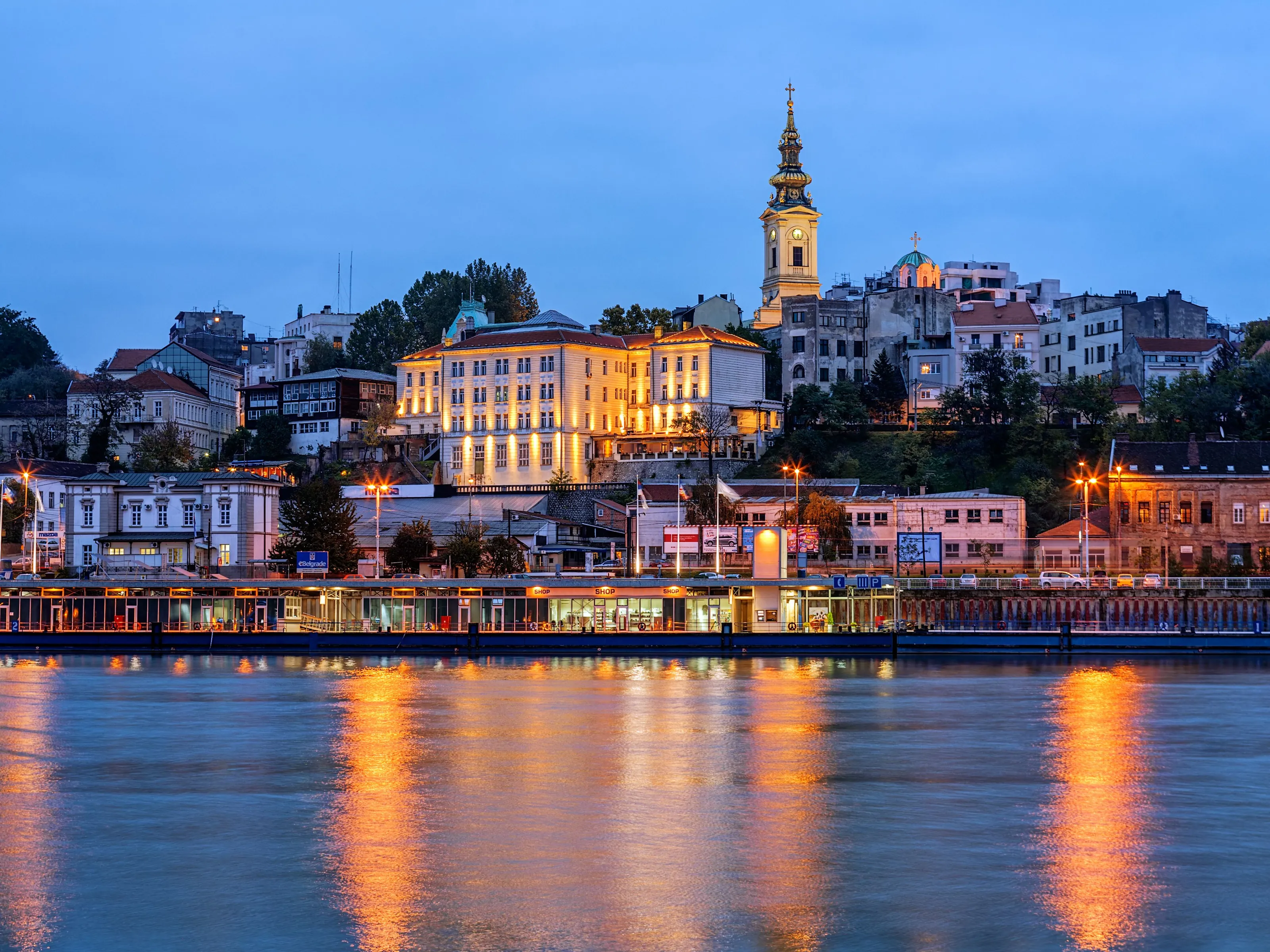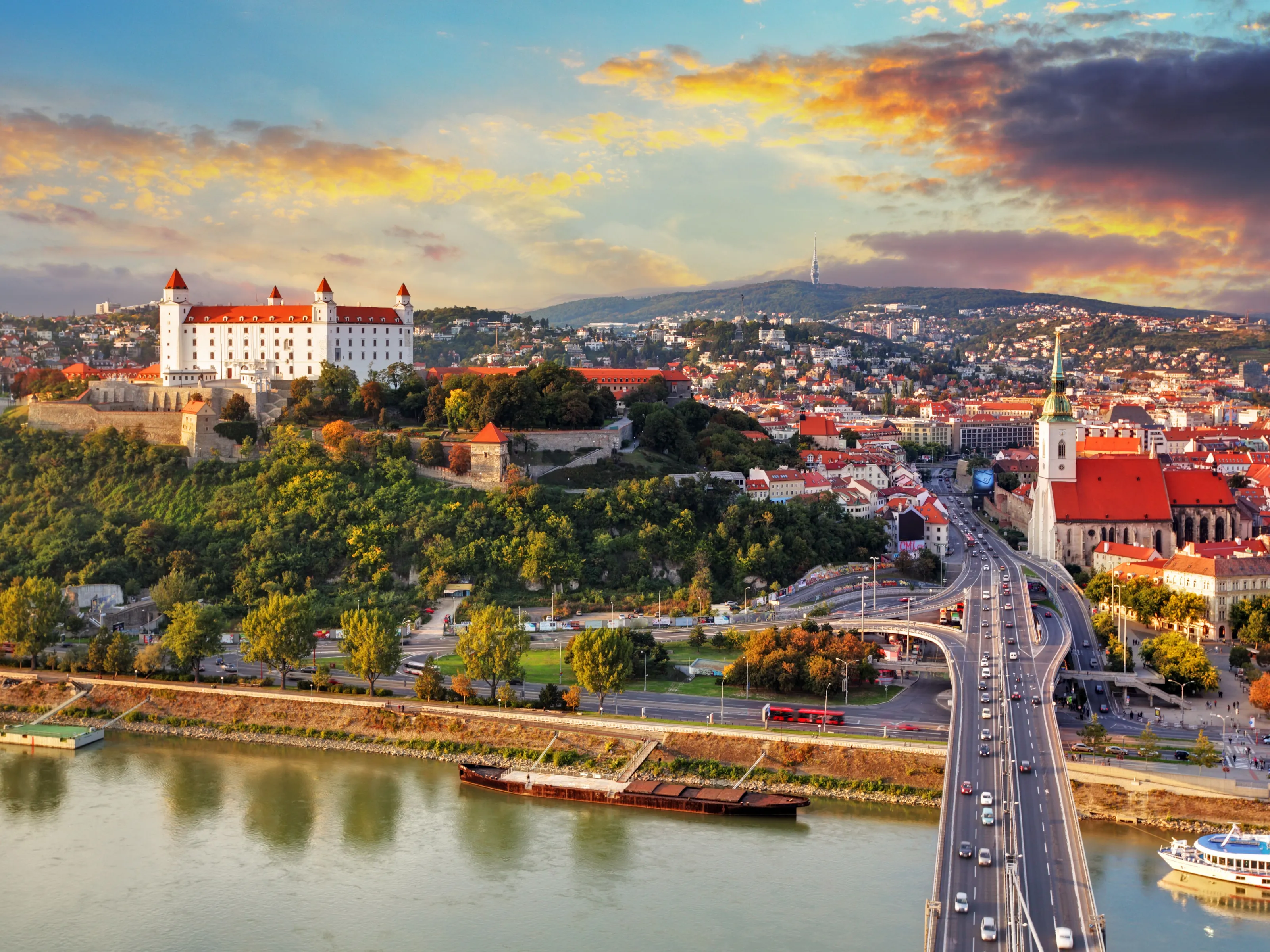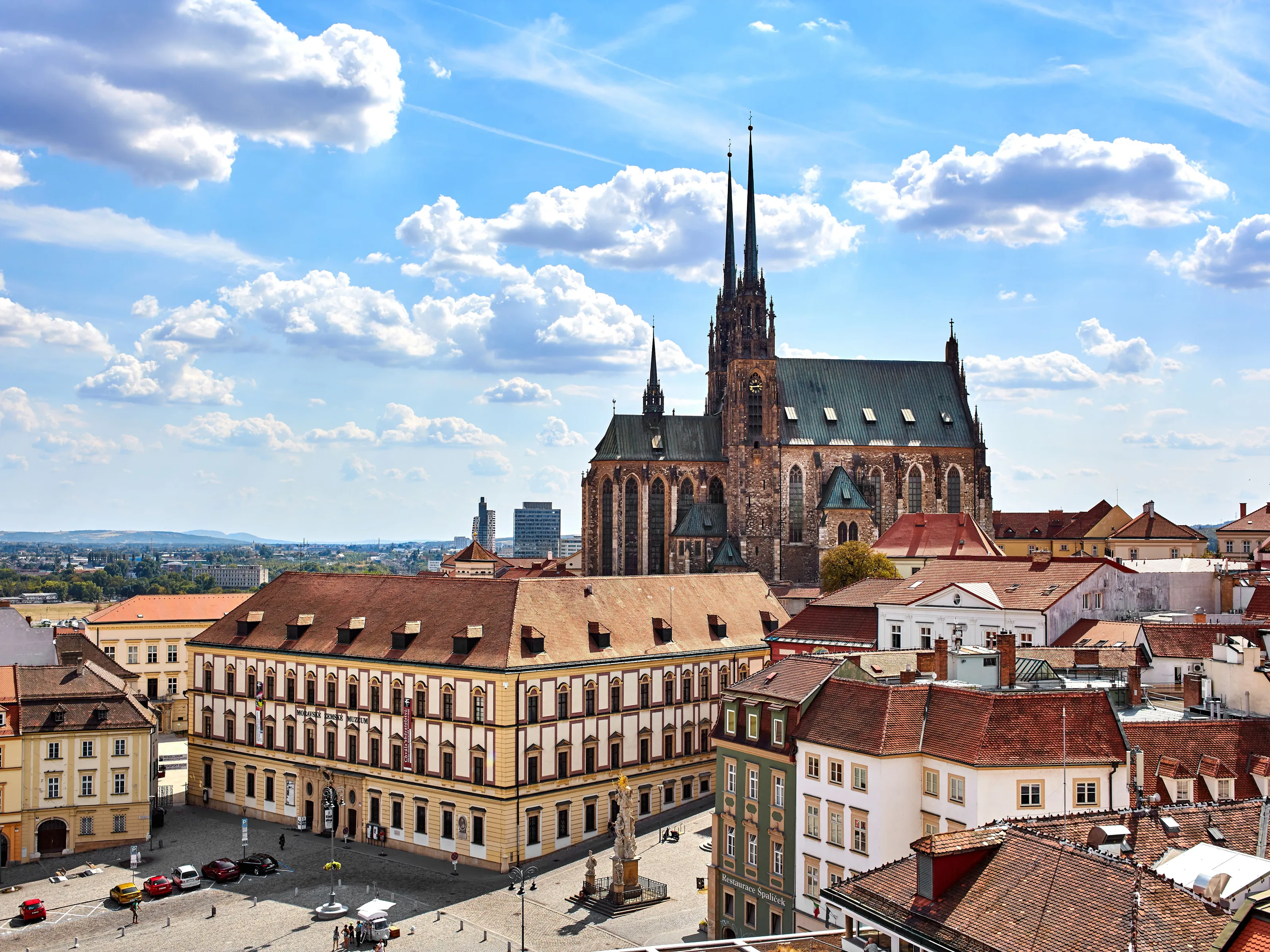Why Visit Tbilisi?
Tbilisi enchants as the soul of the Caucasus where medieval churches perch on hillsides, Art Nouveau balconies overhang narrow lanes in the Old Town, and sulfur baths steam in centuries-old bathhouses that have welcomed everyone from Pushkin to Persian merchants. Georgia's capital (about 1.3 million residents in the city, around 1.5 million in the metro area) straddles the Mtkvari River in a valley surrounded by mountains, blending Georgian Orthodox tradition with Soviet-era architecture, hipster wine bars, and a food culture that rivals any Mediterranean city—yet at prices that shock Western Europeans (wine $1–$3 dinners $5–$13). The Old Town (Dzveli Tbilisi) clusters around Narikala Fortress, a 4th-century citadel reached by cable car offering panoramic views over terracotta rooftops, while below, the sulfur bath district (Abanotubani) preserves public bathhouses with mosaic-tiled interiors and naturally heated sulfurous water (private rooms $16–$32/hour).
Rustaveli Avenue, Tbilisi's grand boulevard, showcases opera houses, theaters, and museums leading to Freedom Square, while the ultra-modern Bridge of Peace arcs across the river in glass and steel—a symbol of Georgia's forward-looking ambitions. Yet Tbilisi's magic lies in its contradictions: crumbling Soviet apartment blocks next to gleaming shopping malls, babushkas selling churchkhela (candy-coated walnuts) beside craft cocktail bars, and 1,500-year-old churches coexisting with nightclubs pumping techno till dawn. Georgian wine culture defines local identity—Georgia claims 8,000 years of winemaking using qvevri (clay vessels buried underground), producing natural wines now trendy globally.
Wine bars like Vino Underground and 8000 Vintages pour amber wines and rkatsiteli varieties for $2–$4 per glass, while traditional feasts (supra) involve endless toasts, khachapuri (cheese bread), khinkali (dumplings), and rivers of wine. Day trips reach Mtskheta (20min, UNESCO site with 11th-century cathedral), Kazbegi mountains (3hrs, church at 2,170m with Mount Kazbek backdrop), and Kakheti wine region (2hrs, vineyard tours and tastings). With visa-free entry for most nationalities, English increasingly spoken (especially among young), Georgian alphabet's unique beauty, and safety levels matching Western Europe despite its geopolitical complexity, Tbilisi delivers authentic culture, incredible value, and a warmth that converts visitors into repeat travelers who rave about 'Europe's best-kept secret.'
What to Do
Old Tbilisi
Narikala Fortress & Cable Car
4th-century fortress perched on hill overlooking Tbilisi's Old Town and Mtkvari River. Take cable car up (around 2.5 GEL, 2 minutes) for panoramic views over terracotta rooftops, colorful balconies, and modern Bridge of Peace. Explore fortress ruins, see Mother Georgia statue (aluminum monument with sword and wine bowl), and photograph the city. Cable car station near sulfur baths. Go late afternoon or sunset (golden hour spectacular). Free to walk fortress grounds. Allow 1-2 hours. Can walk down via Botanical Gardens. Most scenic viewpoint in Tbilisi.
Sulfur Baths (Abanotubani)
Historic bathhouse district with naturally heated sulfurous water bubbling from hot springs. Traditional Georgian experience dating back centuries. Private rooms at Chreli Abano or Gulo's Thermal Baths typically cost 60-120 GEL per room per hour, with scrubs around 20-40 GEL per person (intense but amazing). Public baths are cheaper (around 10-20 GEL) but less private. Mosaic-tiled interiors, domed architecture. Water smells sulfurous but skin feels incredible after. Go afternoon (2-5pm) for relaxation. Book ahead or walk in. Bring swimsuit. Massage attendant scrubs you down with rough mitt (kisa)—embrace it!
Old Town Cobblestone Streets
Wander narrow lanes between Narikala and Bridge of Peace—Shardeni Street for cafes and restaurants, Leselidze Street for shops, hidden courtyards with grapevines, Art Nouveau balconies overhanging. Sioni Cathedral and 6th-century Anchiskhati Basilica (Tbilisi's oldest church) are highlights. Free to explore. Morning (9-11am) best for photography with fewer crowds. Or evening when restaurants open and streets glow. Allow 2-3 hours of aimless wandering. This is Tbilisi's soul—crumbling romantic beauty mixed with hipster cafes.
Wine & Food Culture
Georgian Wine Bars & Qvevri Tradition
Georgia claims 8,000 years of winemaking using qvevri—clay vessels buried underground for fermentation. Natural wines now trendy globally. Visit Vino Underground (natural wine bar, $2–$4/glass), 8000 Vintages, or Wine Library for tastings. Try amber wines (white grapes with skin contact), Saperavi reds, Rkatsiteli whites. Many bars offer cheese/khachapuri pairings. Go evening (6-10pm). Staff passionate about explaining Georgian varietals. Book qvevri winery tour to Kakheti region (2 hrs east, full-day tours $43–$65) to see traditional production in clay vessels. Wine culture is Georgia's pride—essential experience.
Traditional Georgian Feast (Supra)
Experience traditional supra at restaurants like Barbarestan, Shavi Lomi, or Azarphesha (book ahead). Endless small plates: khachapuri (cheese bread—get Adjarian boat-shaped with egg), khinkali (soup dumplings—hold by top, bite carefully, suck juice, eat), mtsvadi (grilled meat), pkhali (vegetable pâtés), lobio (bean stew). Toastmaster (tamada) leads toasts throughout meal—it's rude to drink without toast. Expect 2-3 hour meal with wine flowing. Meals 15-40 GEL/$5–$14 per person. Dinner (7-10pm) best. Portions huge—come hungry!
Fabrika Creative Hub
Former Soviet sewing factory transformed into creative space with hostels, cafes, bars, street art, and design shops. Hipster epicenter of Tbilisi. Outdoor courtyard with food trucks, craft beer, and young crowd. Bassiani techno club in basement (Friday-Saturday nights—in former swimming pool, surreal). Cafes serve brunch and coffee all day. Free to wander. Go afternoon into evening (2pm-midnight) for full vibe. Sunday flea market sometimes. Good base to stay (hostels cheap) or just hang out. Represents modern Tbilisi's creative energy.
Day Trips from Tbilisi
Mtskheta UNESCO Site
Ancient capital of Georgia, 20 minutes north by marshrutka (1 GEL). Visit Svetitskhoveli Cathedral (11th century, alleged burial site of Christ's robe) and Jvari Monastery (6th century, mountaintop cross-shaped church with valley views). Both UNESCO sites. Free entry to churches (dress modestly). Jvari offers stunning panorama where two rivers meet. Half-day trip—leave morning (9am), return lunch. Combine with Château Mukhrani winery tour ($11–$16) on return. Marshrutkas leave from Didube Metro station. Essential day trip—Georgia's spiritual heart.
Kazbegi Mountain Church
Gergeti Trinity Church at 2,170m with Mt. Kazbek (5,033m glacier-capped peak) backdrop—one of Georgia's most iconic views. 3-hour drive north through Georgian Military Highway. Full-day tours ($43–$65) include Ananuri Fortress, Gudauri ski resort viewpoint, and Gergeti hike/4WD up. Church is tiny 14th-century stone building in dramatic alpine setting. Best clear days (May-October). Can get crowded. Bring layers (cold at altitude). Allow full 10-12 hour day. Worth it for mountain scenery—one of Caucasus's most stunning locations.
Gallery
Travel Information
Getting There
- Airports: TBS
Best Time to Visit
April, May, June, September, October
Climate: Moderate
Weather by Month
| Month | High | Low | Rainy days | Condition |
|---|---|---|---|---|
| January | 6°C | -1°C | 4 | Good |
| February | 8°C | -1°C | 6 | Good |
| March | 14°C | 5°C | 10 | Good |
| April | 14°C | 5°C | 10 | Excellent (best) |
| May | 22°C | 11°C | 11 | Excellent (best) |
| June | 30°C | 17°C | 6 | Excellent (best) |
| July | 31°C | 20°C | 5 | Good |
| August | 27°C | 18°C | 7 | Good |
| September | 26°C | 17°C | 6 | Excellent (best) |
| October | 20°C | 11°C | 7 | Excellent (best) |
| November | 11°C | 5°C | 8 | Good |
| December | 6°C | 0°C | 7 | Good |
Weather data: Open-Meteo Archive (2020-2024) • Open-Meteo.com (CC BY 4.0) • Historical avg. 2020–2024
Budget
Excludes flights
Visa Requirements
Visa-free for EU citizens
💡 🌍 Traveler Tip (November 2025): Best time to visit: April, May, June, September, October.
Practical Information
Getting There
Tbilisi International Airport (TBS) is 17km east. Bus 337 to city center 1 GEL for 90-minute ticket (paid with Metromoney or bank card, about 40min). Taxis $11–$16 (agree price or use Bolt app—cheaper $5–$9). Trains from Baku (overnight, $15–$30), Yerevan (10hrs, $10–$20). Marshrutkas (minibuses) connect to Armenia, Turkey, Azerbaijan. Most visitors fly—there are plenty of affordable flights from Europe and the Middle East on a mix of low-cost and full-service airlines.
Getting Around
Tbilisi Metro: 2 lines, 1 GEL for 90 minutes of travel (transfers included, tokens or Metromoney card). Buses: 1 GEL for 90-minute ticket. Marshrutkas (minibuses): 0.80-1 GEL. Bolt taxi app: $2–$5 for most city trips. Old Town walkable. Cable car to Narikala around 2.5 GEL. Day trips: marshrutkas to Mtskheta (1 GEL, 20min), Kazbegi (10 GEL, 3hrs). Rent cars $22–$43/day but parking tough and drivers aggressive. Walking + Bolt covers most needs.
Money & Payments
Georgian Lari (GEL, ₾). Rates fluctuate, but $1 is roughly 3 GEL—check a live rate in your banking app. Cash king—many places don't take cards outside hotels/upscale restaurants. ATMs everywhere. Avoid currency exchange at airport (poor rates). Tipping: round up or 10% in restaurants (not mandatory), round up taxis. Very affordable—meals 15-40 GEL/$5–$14 wine 3-10 GEL/glass/$1–$3
Language
Georgian is official (unique alphabet—33 letters, beautiful script). Russian widely spoken (Soviet legacy). English growing among young people, tourism staff. Older generation limited English. Translation apps essential. Basic phrases: Gamarjoba (hello), Madloba (thank you), Gaumarjos! (cheers—at every toast). Georgians patient with foreigners struggling with their complex language.
Cultural Tips
Toasting culture: at supra (feast), tamada (toastmaster) leads endless toasts—it's rude to interrupt or drink without toast. Hospitality sacred—Georgians treat guests like family, may invite you home. Orthodox traditions: cover shoulders/knees in churches, women may need headscarves. Remove shoes when entering homes. Sunday church services beautiful (singing is hauntingly polyphonic). Wine: never pour your own (host does), hold glass stem when toasting. Traffic: cars don't stop for pedestrians—cross carefully. Bargaining not customary. Georgians expressive, warm, love foreigners learning Georgian phrases. Bring stomach space—portions huge, saying no to food nearly impossible.
Perfect 3-Day Tbilisi Itinerary
Day 1: Old Town & Fortress
Day 2: Mtskheta Day Trip & Wine
Day 3: Modern Tbilisi & Food
Where to Stay in Tbilisi
Old Town (Dzveli Tbilisi)
Best for: Historic heart, sulfur baths, Narikala Fortress, cobblestones, churches, romantic, touristy but essential
Rustaveli Avenue
Best for: Grand boulevard, opera, theaters, museums, Parliament, upscale shopping, elegant
Fabrika
Best for: Hipster creative hub, hostels, cafés, bars, street art, young crowd, Soviet industrial vibe
Vera & Sololaki
Best for: Residential charm, Art Nouveau balconies, quiet streets, local life, boutique hotels
Frequently Asked Questions
Do I need a visa to visit Georgia?
What is the best time to visit Tbilisi?
How much does a trip to Tbilisi cost per day?
Is Tbilisi safe for tourists?
What should I eat and drink in Tbilisi?
Popular Activities
Top-rated tours and experiences in Tbilisi
Ready to Visit Tbilisi?
Book your flights, accommodation, and activities






